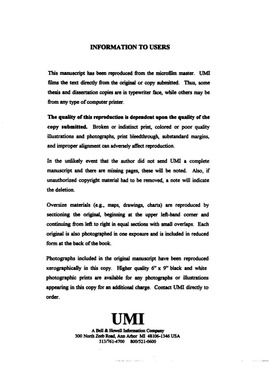| dc.contributor.advisor | Haring, Kathryn, | en_US |
| dc.contributor.author | Shelden, M'lisa Lynn. | en_US |
| dc.date.accessioned | 2013-08-16T12:29:51Z | |
| dc.date.available | 2013-08-16T12:29:51Z | |
| dc.date.issued | 1997 | en_US |
| dc.identifier.uri | https://hdl.handle.net/11244/5538 | |
| dc.description.abstract | To assure that students fully utilize their fine motor capabilities, variables that affect fine motor accuracy must be identified. Research has shown that students with motor impairments are often dependent on external positioning to facilitate their functioning. Studies of the effect of spatial orientation of students with cerebral palsy in wheelchairs have shown the upright position to be superior to reclined or semi-reclined positions. However, tilting students in their chairs continues to be a common practice, with little or no understanding of what effect tilting the chair can have on the students' overall level of functioning. In educational environments, a prevalent practice in the realm of physical therapy has been to provide positioning programs. However, little information is available regarding the influence that different positions have on areas of physical and cognitive functioning. The purpose of this study was to provide information regarding the effects of positioning on the accuracy of hand function and observed compensatory behaviors in students with cerebral palsy who are nonambulatory. More specifically, this study compared the accuracy of hand function as tested by standardized fine motor assessments and compensatory behaviors observed during fine motor assessments in three specific sitting and standing positions. Using repeated measures analysis of variance, fine motor functioning and compensatory behaviors were analyzed across several different groups. Although variability among and within the groups was strong, position did appear to impact student fine motor performance and compensatory behaviors across students and groups. | en_US |
| dc.description.abstract | Students with motor disabilities are faced with more challenges than those faced by typical students in the educational environment. One important issue facing these students is limited fine motor accuracy which interferes with writing requirements for classroom activities. Students with motor disabilities may also have speech and language problems which intensify communication problems and make it difficult for teachers to determine student comprehension level. Standardized tests that require skilled fine motor accuracy are typically used to determine developmental levels, as well as intelligence quotients. Therefore, it is imperative that the fine motor skills these students do possess are utilized in the most efficient manner possible to ensure that learning potential is maximized. | en_US |
| dc.format.extent | xi, 111 leaves : | en_US |
| dc.subject | Education, Special. | en_US |
| dc.subject | Cerebral palsied. | en_US |
| dc.subject | Motor ability. | en_US |
| dc.subject | Health Sciences, Rehabilitation and Therapy. | en_US |
| dc.subject | Posture. | en_US |
| dc.title | The effect of positioning on the fine motor accuracy and compensatory behaviors observed during fine motor tasks of students with cerebral palsy who are nonambulatory. | en_US |
| dc.type | Thesis | en_US |
| dc.thesis.degree | Ph.D. | en_US |
| dc.thesis.degreeDiscipline | Department of Educational Psychology | en_US |
| dc.note | Chair: Kathryn Haring. | en_US |
| dc.note | Source: Dissertation Abstracts International, Volume: 58-08, Section: A, page: 3089. | en_US |
| ou.identifier | (UMI)AAI9806331 | en_US |
| ou.group | Jeannine Rainbolt College of Education::Department of Educational Psychology | |
